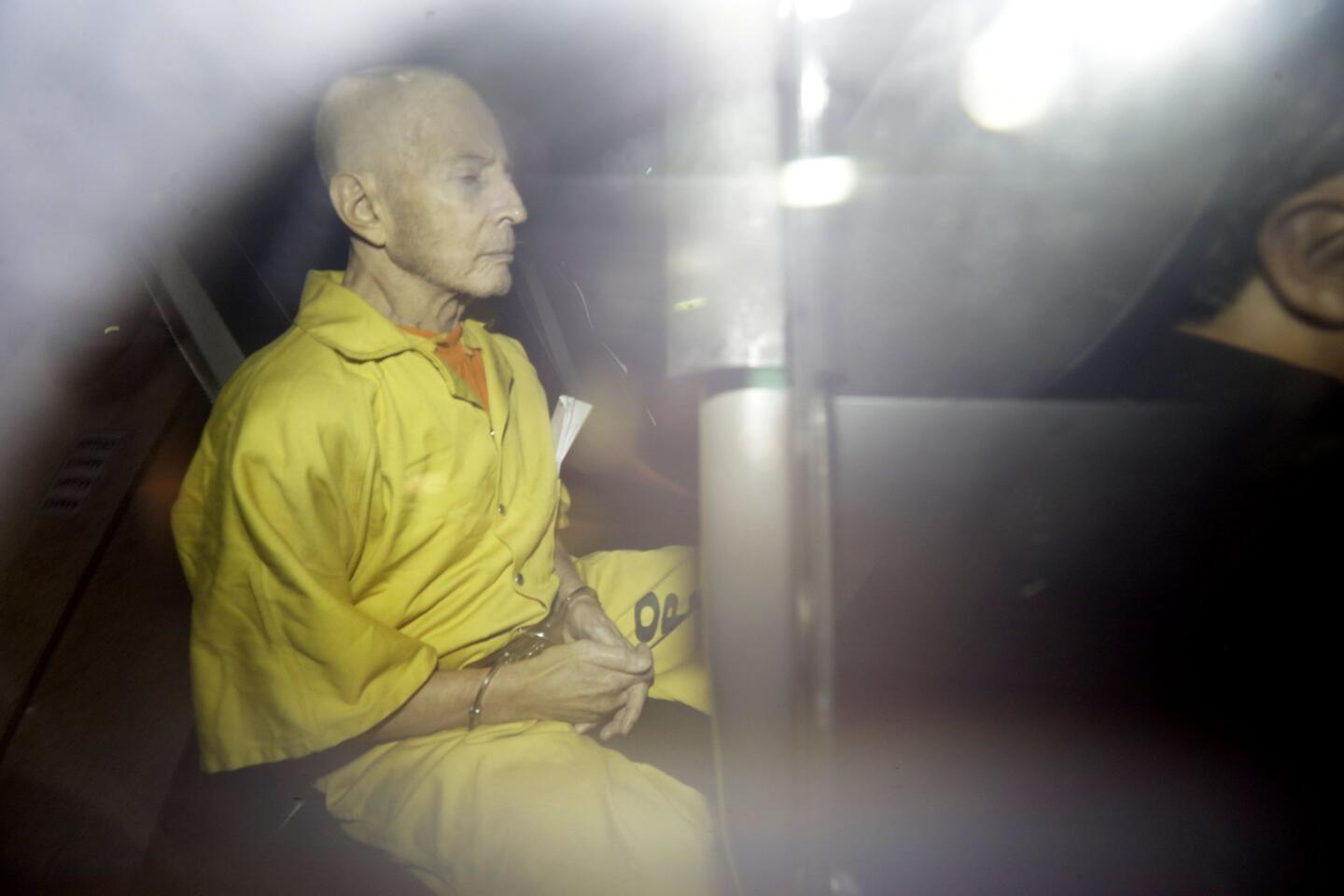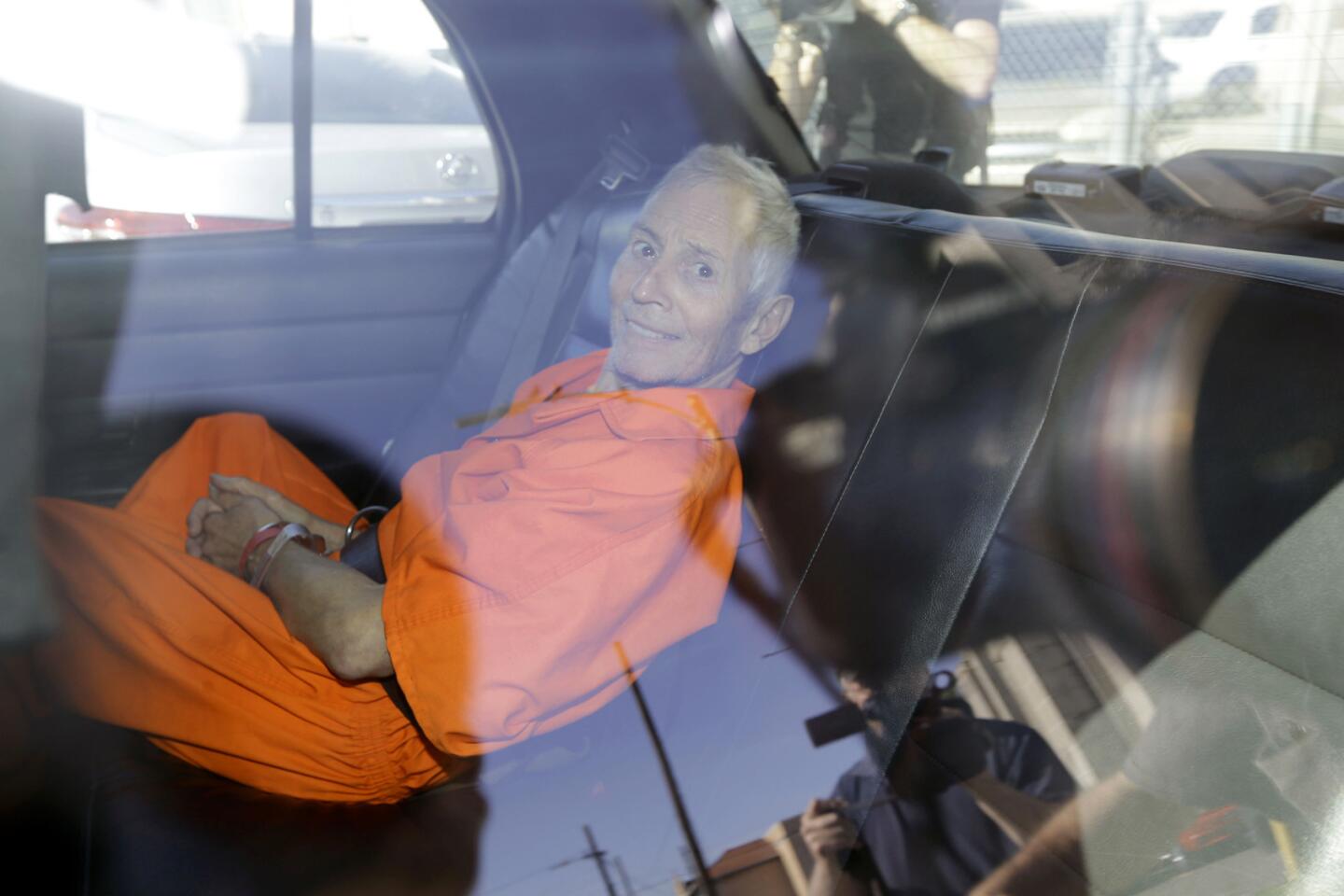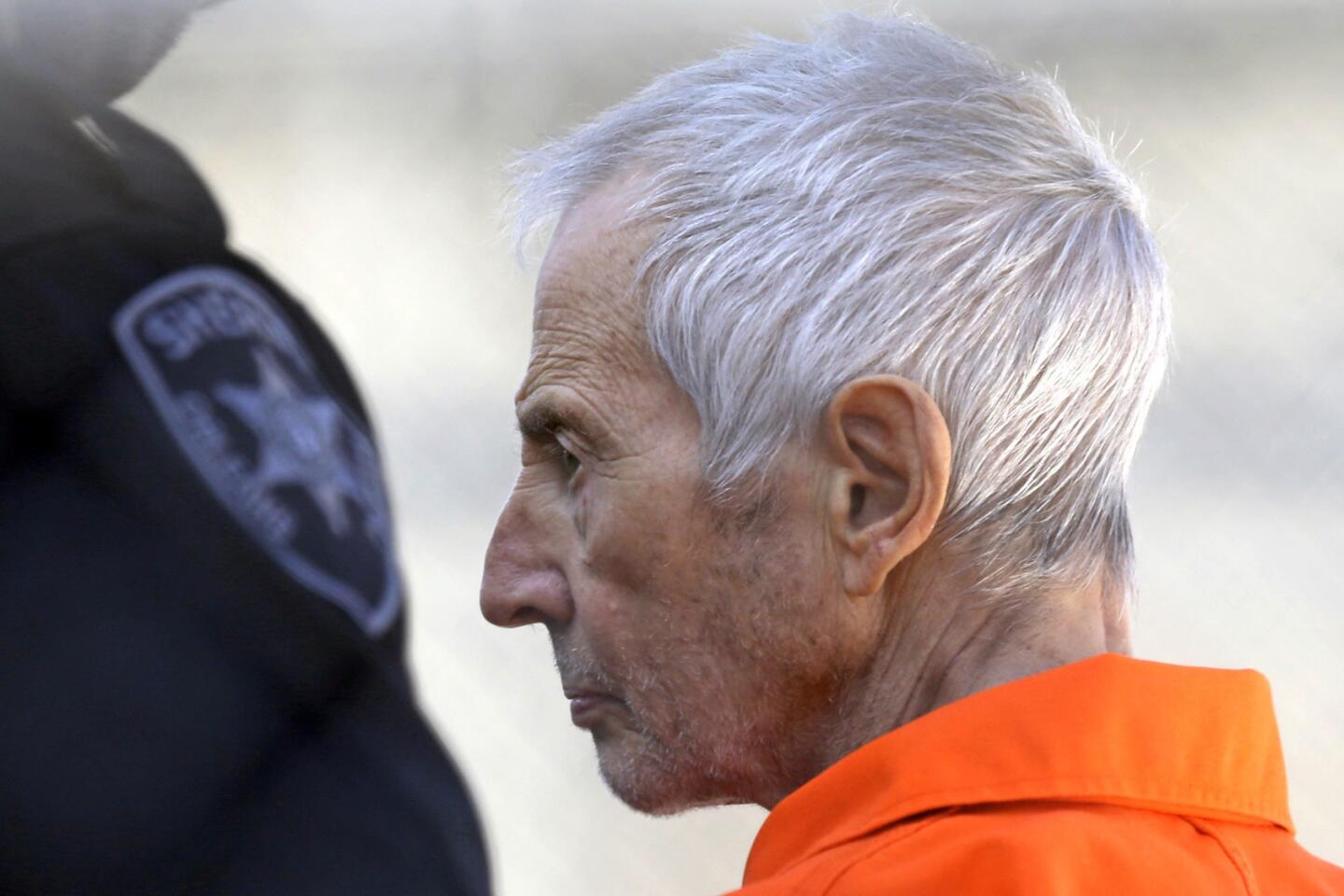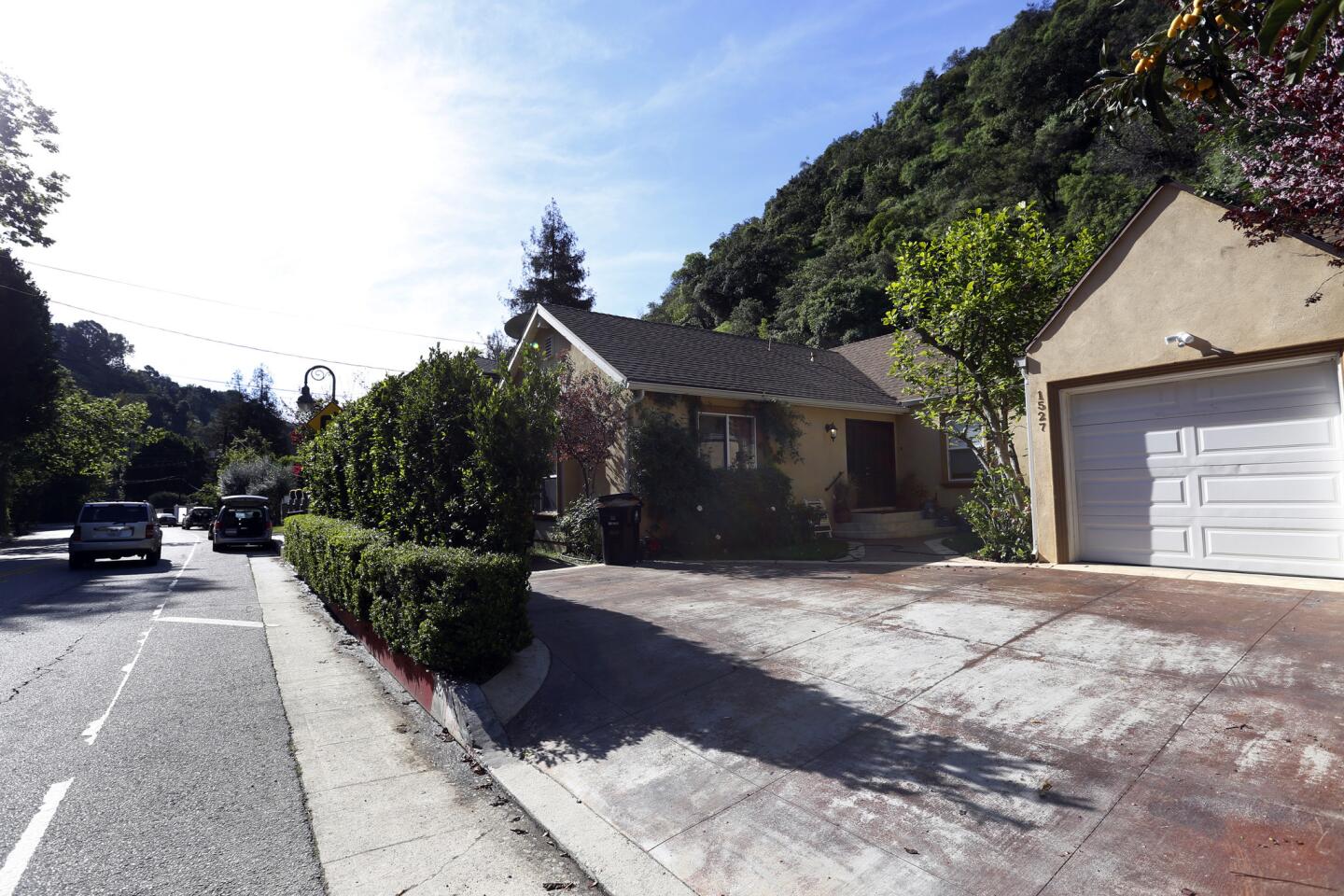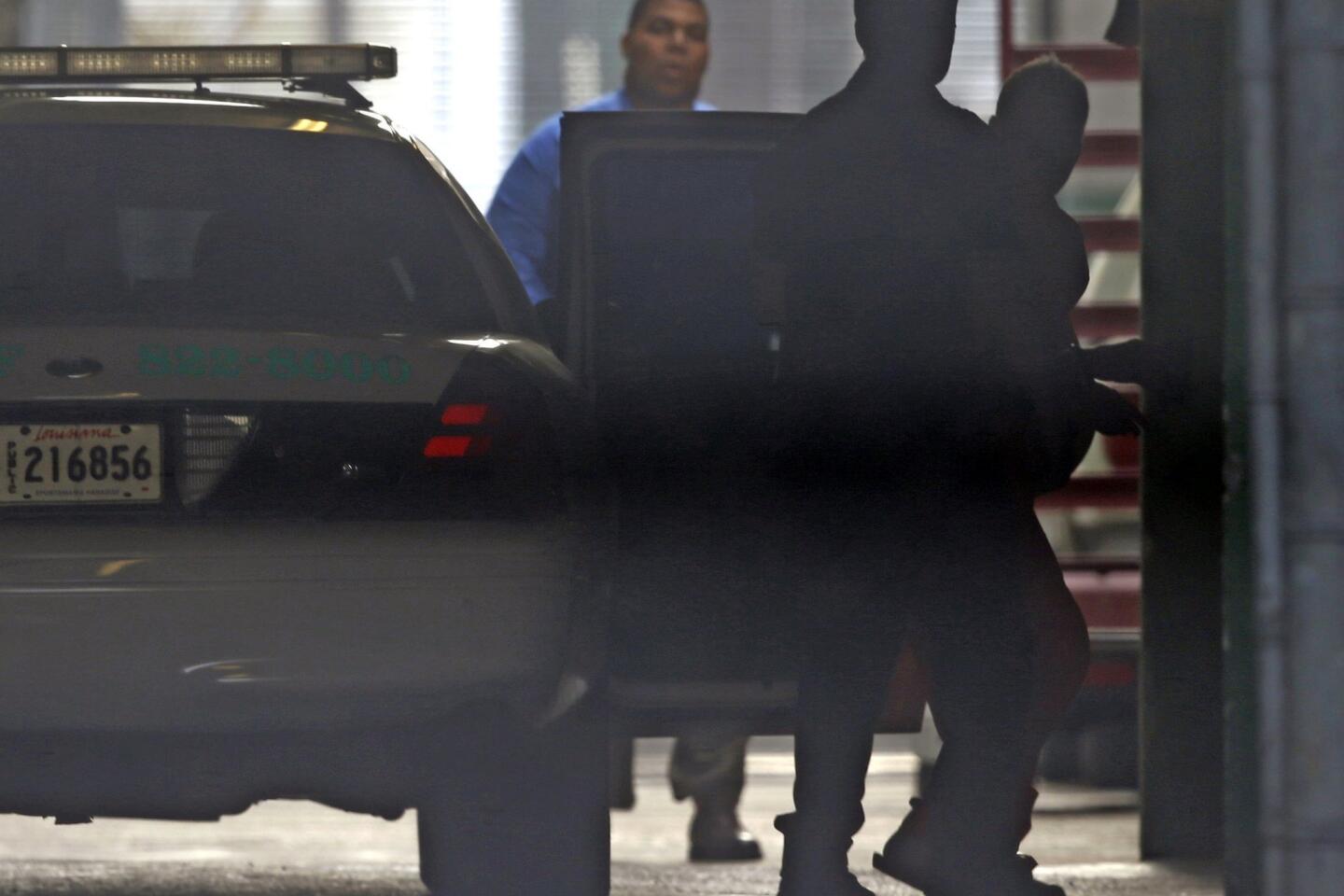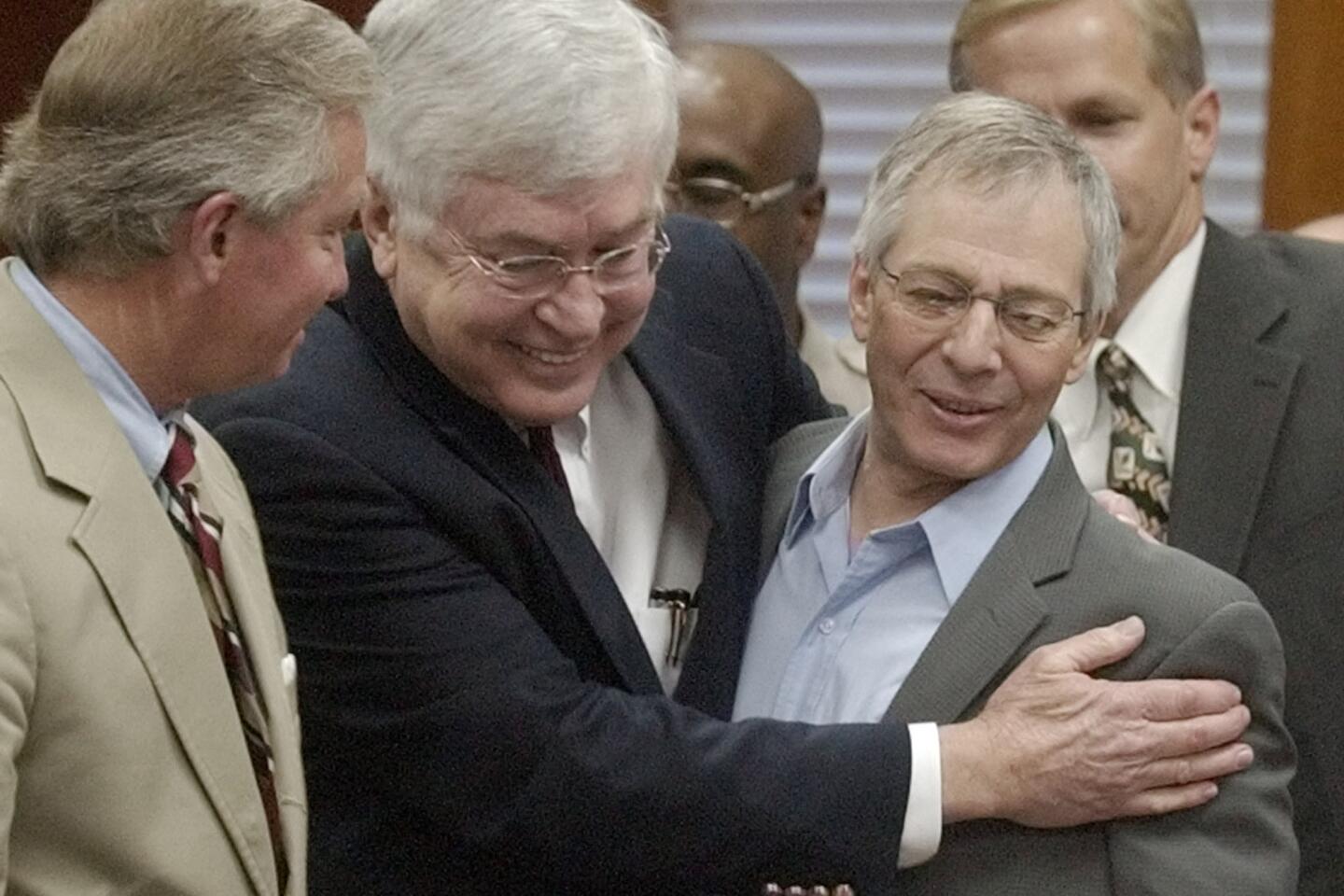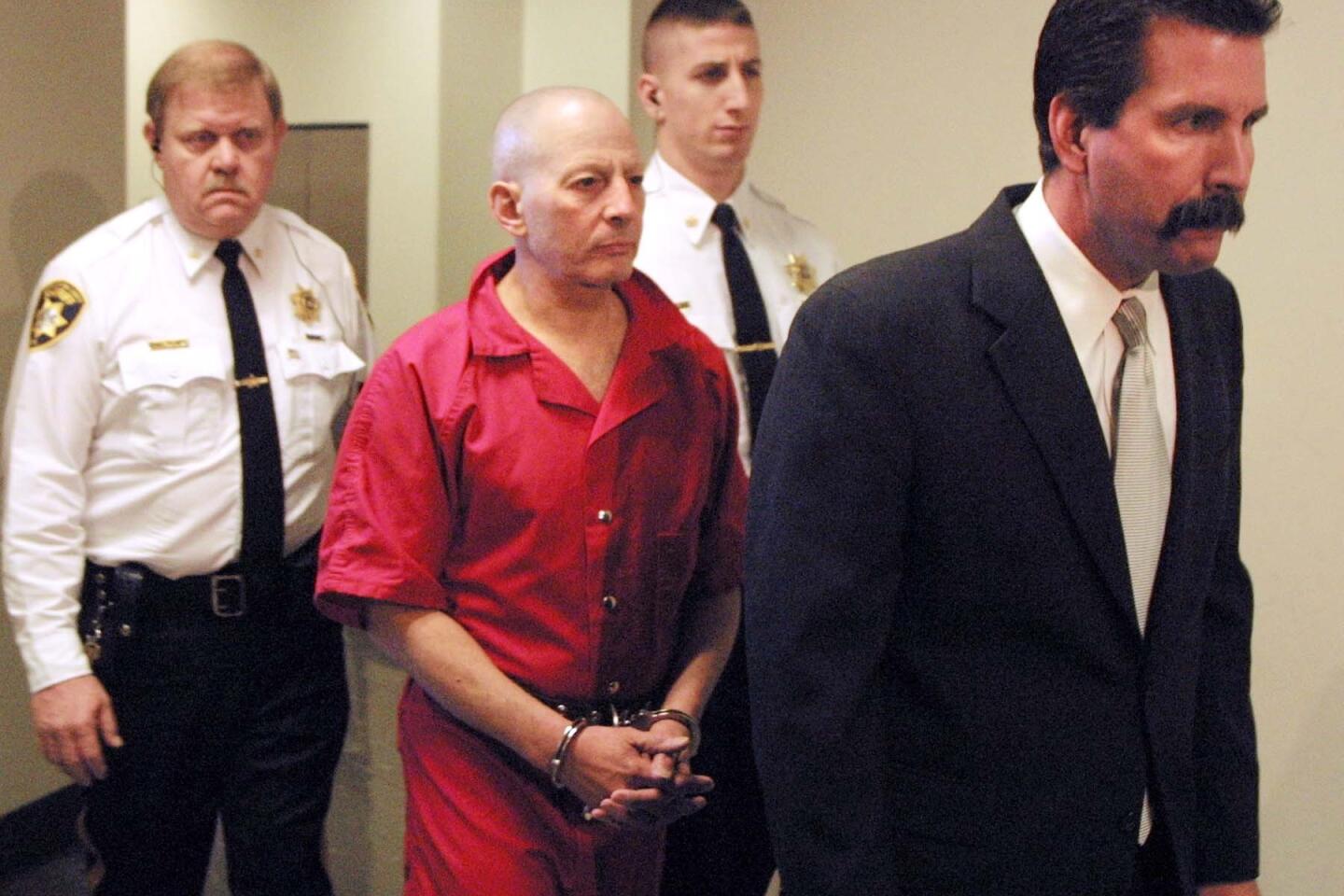Is âThe Jinxâ a threat to traditional feature documentaries?
Of the many angles to Andrew Jareckiâs âThe Jinxâ that have been remarked upon over the past few days, one thatâs slipped by relatively unnoticed is the format--specifically, the serialized one.
This is at heart a documentary, that most venerable of feature types. And Jarecki is, of course, a noted doc feature filmmaker, having made the hit âCapturing the Friedmansâ a little more than a decade ago.
In fact, Jarecki initially thought âJinxâ would be a feature doc too, until he decided to go in a serial direction. As he explained to my colleague Meredith Blake:
âWe started, we had this 4 1/2-hour thing and it was clear that it wasnât finished. At a certain point during the day weâre all talking about how we just watched âHomelandâ or we just saw âHouse of Cardsâ or we just watched the original âHouse of Cardsâ or âThe Wireâ and everybody in the edit room is obsessed with these serialized stories,â he said. âWeâre living in a binge watching universe where people are watching 10 episodes at a time of things. Why donât we accept where we are in the universe. Letâs abandon the idea that this has to be a feature length film.â
And so it has found life as a six-hour television series--on HBOâs vaunted Sunday night schedule no less, in the same slot that had us watching the scripted crime drama of âTrue Detectiveâ a year ago. What might in another era have well been a traditional doc is now coming in a newer and modern form.
Serial has become the buzzword for documentaries. Nonfiction filmmakers now increasingly believe that the feature (and the theatrical release window it was tailored for) is a thing of the past. We live in an age of binge watching and episodic content, so why shouldnât doc films follow the trend?
The rise of docs on television and digital platforms, and our commensurate need to gobble up large slabs of content, means that docs now increasingly can and will live as longform pieces. As Thom Powers, doc overseer for Toronto and a host of other film festivals, said in an interview for a story about the true crime doc in todayâs Times: âEvery meeting I have these days, itâs not very long before someone brings up the idea serial.â He said heâs considering programming serialized content at his fests. (âJinx,â in fact, premiered at Sundance.)
Serialized docs actually pose a challenge at a festival, because programmers donât have five- or six-hour slots to spare, and distributors donât want them to give away the whole shebang in any event. Still, theyâve taken note of the trend and are seeking ways to make room for it.
The hunger for serial solves a problem doc filmmakers have long faced. Backers can be stingy, reluctant to support movies of greater length (they are, after all, more expensive), forcing filmmakers to cut out essential material.
Plus for many viewiers itâs a refreshing change to see serialized content gain traction in an attention span-starved world. Pieces like âThe Jinxâ (and precursors like âThe Staircaseâ) would be a lot less interesting if they were jammed down to fit into a feature compartment. Stories like that need room to breathe, time to wend this way and that, with perhaps even a little cliffhanger or two thrown in.
But serial isnât a magic bullet. In fact, it can sometimes just be a regular bullet. True crime of the twisty-turny sortââThe Jinx,â âSerialââworks in this format. Policy docs donât. Did you want six hours of âBlackfish?â How about âFood, Inc.â? And personality-driven tales donât lend themselves to this much either. â20 Feet from Stardomâ was really fun over about 100 minutes, but I donât know if I need to see new chapters over a month and a half. Four more hours of Snowden in the hotel room wouldnât have made âCitizenfourâ any better either. It probably would have made it worse.
Jareckiâs abandonment of the feature form of course isnât entirely the act of self-sacrifice he describesâmost directors want more hours to tell their stories, whether or not those stories merit that time. The fact that doc filmmakers now can do more is welcome, but that doesnât mean they always need to do more. Sometimes thereâs value in telling a story neatly, compactly, with excess weight shed.
Itâs likely there will be a mix of feature and serialized docs in the years ahead. Thereâs room for both. Letâs just hope the right subjects are matched with the right format. Too much expansion of a short story can be just as painful as too much compression of a long one.
Twitter: @ZeitchikLAT
More to Read
Only good movies
Get the Indie Focus newsletter, Mark Olsen's weekly guide to the world of cinema.
You may occasionally receive promotional content from the Los Angeles Times.
